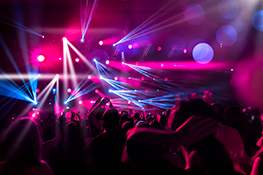Stage Lighting Secrets: Pro Tricks to Transform Your Show
Mastering the Art of Wash Lighting
Wash lighting, the seemingly simple technique of bathing the stage in even color, is deceptively complex. Achieving a truly uniform wash requires careful attention to fixture placement, overlap, and color mixing. Professional lighting designers utilize precise calculations to ensure even illumination across the entire performance area, avoiding harsh hotspots or dark patches. Understanding the inverse square law – the intensity of light decreases with the square of the distance – is critical for achieving consistent washes. Experiment with different fixture types, such as LED pars and profiles, to find what best suits your venue and show requirements. Learn to adjust your dimmer curves to create smooth fades and avoid abrupt changes in intensity. Don’t underestimate the power of a well-executed wash; it’s the foundation upon which all other lighting effects are built.
Harnessing the Power of Gobos for Stunning Visuals
Gobos, or go-betweens, are metal templates placed in front of lighting fixtures to project patterns onto the stage. From simple geometric shapes to intricate designs, gobos offer a wealth of creative possibilities. However, achieving crisp, well-defined projections requires careful consideration of several factors. The distance between the gobo and the projection surface is crucial, as is the focus of the lighting fixture. Experiment with different gobo sizes and materials to achieve the desired effect. Consider using multiple gobos simultaneously, layering patterns to create complex and evocative visuals. Furthermore, explore the use of rotating gobos to add dynamism and movement to your stage design. The strategic use of gobos can instantly elevate the visual appeal of any production.
Sculpting Light and Shadow with Precise Spotlighting
Spotlights offer unparalleled control over the direction and intensity of light, allowing lighting designers to highlight specific areas or performers. Mastering the art of spotlighting involves understanding the interplay of light and shadow. Precise aiming, precise focusing, and careful manipulation of the beam angle are key to creating dramatic effects. Learn to use shutters and barn doors to shape the beam, creating sharp edges or soft transitions. Explore the use of different color temperatures to enhance the mood and atmosphere of the scene. Don’t be afraid to experiment with various spotlighting techniques, including backlighting, sidelighting, and key lighting, to create a rich and layered lighting design. The ability to sculpt light and shadow is essential for crafting visually stunning and emotionally resonant performances.
Color Mixing: The Key to Atmospheric Excellence
The skillful use of color is paramount in creating a captivating stage atmosphere. Understanding color theory is essential, particularly the additive nature of light and the impact of color temperature. Experiment with mixing different colors to achieve subtle nuances and create unique hues. Learn to use color gels to enhance the overall mood and emotional impact of your production. Consider the psychological impact of different colors on the audience, employing warm colors for intimacy and cool colors for drama. Remember that the color of your lighting can significantly impact the mood and feel of a performance. Experiment with creating color washes, gradients, and dynamic transitions to further enhance the visual impact.
The Importance of Pre-Production Planning and Communication
Successful stage lighting is not solely about technical skills; it’s also about effective pre-production planning and clear communication. Work closely with the director, set designer, and other members of the production team to develop a lighting design that complements the overall artistic vision. Create detailed lighting plots, documenting the placement and function of each lighting fixture. Establish clear communication protocols to ensure everyone is on the same page throughout the production process. Thorough planning and effective teamwork are vital to ensure a smooth and successful production. This pre-planning stage is often underestimated but is a key ingredient for success.
Advanced Techniques: Moving Lights and Special Effects
Moving lights have revolutionized stage lighting, offering unprecedented flexibility and control. Mastering the operation of moving lights involves understanding their various functions, including pan, tilt, zoom, gobo rotation, and color mixing. Experiment with different moving light patterns and effects to create dynamic and visually engaging sequences. Explore the use of special effects, such as strobes, chases, and washes, to enhance the drama and excitement of the show. Advanced techniques such as pixel mapping allow for even more intricate and detailed lighting designs, opening up a world of possibilities.
By mastering these techniques and embracing creativity, you can transform your stage productions from ordinary to extraordinary. The journey to becoming a skilled lighting designer is ongoing, filled with continuous learning and experimentation. Embrace the challenge and watch your stage come alive.


 Auditorium Construction Services
Auditorium Construction Services 